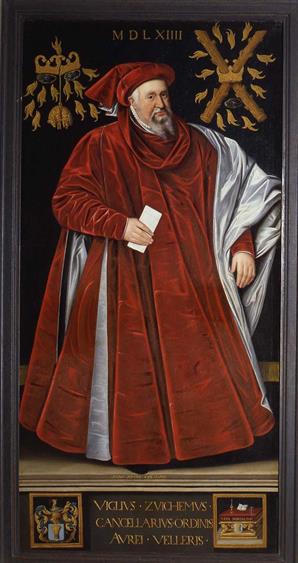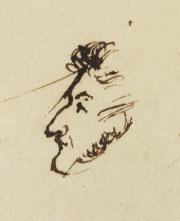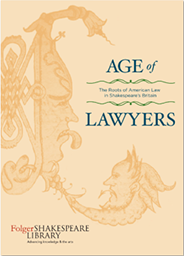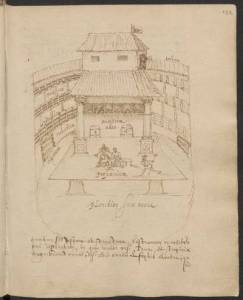Since many years the European Union gives every year two cities the title European Cultural Capital. Cities compete with elaborate bid-books to get this coveted title. In 2018 La Valletta, the capital of Malta, and Leeuwarden, the main city of the Dutch province Friesland (Frisia), share the honours. In this post I will look at Frisian culture and history. However varied the program of events, i would like to look at more enduring institutions and projects which bring Frisian culture and history to you. Legal history has its own place in this context.
A matter of languages, and much more
The most striking element of the portal Leeuwarden 2018 is the absence of Frisian as a language to view this commercial website. You can choose between Dutch, Frisian, English and German at another portal, Leeuwarden-Fryslân – European Capital of Culture 2018. Here, too, you will find a calendar of events, but their cultural dimensions are given more prominence. Among the cultural events the parade of three giants in Leeuwarden made a great visual impact. Events took place in many Frisian towns and villages, ranging from opera to a heroic solo swimming tour along eleven towns to raise money for the treatment of cancer. Building the community, mienskip, was a central theme.
Frisia’s legal history
It would be almost easy to foucs here on either medieval Frisian law, with remarkable texts such as the Lex Frisionum, late medieval regulations on water management or the Roman-Frisian law during the period of the Dutch Republic, Frisia’s own version of the Roman-Dutch law. Tresoar provides us also with an overview of sources at Alle Friezen (All Frisians), available in Frisian, Dutch and English. The links section of Tresoar is most useful, You might want to look at other Frisian archives as well, easily found using the Fries Archiefnet. However, I have chosen an other subject within Frisia’s long legal history.
Amidst all events for Leeuwarden 2018 you could easily miss the opening on October 19, 2018 of the exhibition at Tresoar, the Frisian archive and library in Leeuwarden, around a Frisian lawyer, and the uncovering of a statue in his honor by Herman van Rompuy. Wigle van Aytta van Zuichem (1507-1577) latinized his first name to Viglius. He was born at the Barrahuis estate (stins) in Wirdum near Leeuwarden. His uncle Bernard Bucho was a councillor of the Hof van Holland in The Hague and saw to Viglius’ education. As many students from the Low Countries Viglius started his studies in Leuven (Louvain) where he arrived in 1522, but a few years later he went further abroad. In 1526 he was at the university of Dôle. In 1529 he received his doctoral degree in Valence. He continued his travels to Bourges to become a student and assistant of Andrea Alciato. Soon his career started. In 1532 and 1533 he taught the Institutiones Iustiniani in Padua, in 1534 he became the official (ecclesiastical judge) for the bishop of Münster, in 1535 and 1536 he was at the Reichskammergericht in Speyer before teaching law at Ingolstadt between 1537 and 1541.

Painting of Viglius van Aytta as chancellor of the Order of the Golden Fleece, 1564, by Jacob de Punder (1527-around 1570) – Leeuwarden, Fries Museum
His political career started at an amazingly high level in 1540 when he became a member of the Conseil Secret (Geheime Raad, Secret Council), one of the most important institutions in the Habsburgian Low Countries. In 1549 he became its president, first until 1569, and again from 1573 to 1575. Meanwhile he had joined in 1543 also the Groote Raad van Mechelen (Great Council of Malines), a very important high court for the Low Countries. He conducted the negotiations for Charles V for the Burgundian Treaty of 1548 which led to a more coherent status of the Low Countries in relation to the Holy Roman Empire. In 1554 he became the president of the Raad van State, the state council. At the abdication of Charles V in 1555 he wanted to step down from his functions, but king Philip II convinced him to stay with for example the promise to become abbot of the rich St. Bavon Abbey at Ghent. Viglius’ wife Jacqueline Damant had died in 1553,. In 1562 he had been ordained to the priesthood by Antoine Perrenot de Granvelle, the trusted councillor of Philipp II and at the height of his powers as recently appointed archbishop of Malines. By now it will not surprise you Viglius presided since 1563 as chancellor of the Order of the Golden Fleece. I could have chosen a more sober portrait of him painted by Frans Pourbus the Elder, now in the Louvre, but the painting at the Fries Museum in Leeuwarden is most telling.
Legal historians can encounter him as a legal humanist. In 1534 Viglius published the editio princeps of the Greek paraphrase by Theophilus of the Institutes (Institouta Theophilou antikēnsōros) [Institutionum iuris civilis in Gracam linguam per Theophilum antecessorem olim traductae (…) (Basel: in officina Frobeniana, 1534: online, Vienna, Österreichische Nationalbibliothek)], followed by a Latin translation in 1536. Also in 1534 appeared his lectures on the Institutes held in Padua, Commentaria Viglii Zuichemii Phrysii in decem titulos Institutionum (…), published in Basel by Froben (online, Munich, Bayerische Staatsbibliothek). When you check the Universal Short Title Catalogue (USTC; University of St. Andrews) for early editions of works by Viglius you will find a notice about an edition Lyon 1533 held at Montauban, but the database of Lyon15-16. Bibliographie des éditions lyonnaises 1473-1600 makes clear this is probably an edition printed at Lyon in 1564. Only posthumously appeared a series of lectures held at Ingolstadt, Praelectiones in titulum pandectarum, de rebus creditis, et ad titulum codicis Justinianaei, de edicto divi Hadriani tollendo (Cologne: Gervinus Calenius and heirs of Johann Quentel, 1582; online, Universiteit Gent).
The USTC shows a number of pamphlets from 1543 by Viglius from the years on political matters. His Confutatio defensionis ducis Clivensis super jure ducatus Geldriae ac comitatus Zutphaniae (…) (Antwerp 1543), reprinted the same year as Serenissimae reginae Mariae contra ducem Clivensem justificatio also appeared in Dutch, De onschult der coninginnen vrou Marie regeerster der Erf Nederlanden tegen den hertoge van Cleve (…) (Antwerp 1543). Mary of Hungary, governor of the Low Countries, asked Viglius to act as her ambassador at Nuremberg and to speak up against the aggressive policies of duke William of Cleve who claimed the territory of the duchy Guelders (Gelre).
Finding out about Viglius
There is a considerable body of literature about Viglius life and works. The two volumes of the biography by Folkert Postma stand out, Viglius van Aytta als humanist en diplomaat 1507-1549, (Zutphen 1983) and Viglius van Aytta. De jaren met Granvelle 1549-1564 (Zutphen 2000). Not all of Viglius’ writings were published in the sixteenth century. At the multilingual portal site Dutch Revolt only the Dutch version has a section with numerous biographies, the one for Viglius mentions a number of relevant titles. The long article on Viglius by Postma in the Nationaal Biografisch Woordenboek is available online, too, but alas this, too, is in Dutch [NBW VIII (1979), col. 837-855]. The Royal Dutch Academy of Sciences has created a bio-bibliographical lexicon of Dutch humanists between 1500 and 1700, but this resource, too, is only accessible in Dutch, as is the one for Viglius by Toon van Houdt. He notes for example an earlier pamphlet by Viglius dealing with the Cleve-Guelders controversy, Assertio ivris imperatoris Caroli hvivs nominis Quinti, in Geldrię ducatu, & Zutphaniæ comitatu (…) (Antwerp 1541; online, Universiteit Gent). Some works have received attentions only in the last decades. Regina Sprenger wrote about Viglius’ notes about his work as a judge (Assessor) at the Reichskammergericht, Viglius van Aytta und seine Notizen über Beratungen am Reichkammergericht (1535-1537) (Nijmegen 1988). This Protokollbuch is kept at Brussels, Koninklijke Bibliotheek, ms. Van der Gheyn, nos. 2837 to 2840. Paul Nève and Regina Sprenger have published together articles about his time in Speyer. Joost Pikkemaat has studied the lectures held at Ingolstadt [Viglius van Aytta als hoogleraar te Ingolstadt (Nijmegen 2009)]. Earlier he wrote for example about Viglius’ inaugural lecture at Ingoldstad [‘De inaugurale rede van Viglius van Aytta aan de universiteit van Ingolstadt’, in: Van oud en nieuw recht : handelingen van het XVde Belgisch-Nederlands rechtshistorisch congres, Dirk Heirbaut and Daniël Lambrecht (eds.) (Ghent 1998) 53-65]. There is a brief biographical article in English on Viglius by Michael Erbe in Contemporaries of Erasmus: A Biographical Register of the Renaissance and Reformation, P.G. Bietenholz and T.B. Deutscher (eds.) (3 vol., Toronto 1985-1987; reprint 2003) III, 393-395, where Viglius’ position in the network around Erasmus is concisely charted.
Viglius is remarkable also for his historical work and an autobiography. He collected maps and he acted as the first librarian of the royal library in Brussels. A number of his letters, too, were published. You can consult four original letters sent to Viglius in the image library of the Vrije Universiteit Amsterdam. The Kalliope guide for manuscripts and personal papers in Germany alerts to some letters and to 23 volumes at Göttingen, and to a volume with letters in Giessen. In Paris the BnF has among its archives et manuscrits a volume of the Manuscripta Zwichemiana (Nouv. acq. fr. 6168) and some letters from king Philip (Mélanges Colbert 409, VII, no. 817). If you search for Viglius at the Dutch archives portal you will find in particular in Leeuwarden and Utrecht archival records. When you use the Archives Portal Europe you will find even more. At Mémoire vive, the digital portal of the city Besançon you can find materials concerning Viglius within the Collection Granvelle. For those with access to the licensed Picarta resources, for instance via the Dutch Royal Library, you will find more letters in the Nederlandse Centrale Catalogus, and you will wonder why only two letters are listed in another Picarta resource, the Catalogus epistularum neerlandicarum, a database for finding Early Modern letters in a number of Dutch public collections. The two volumes of Postma will help you to trace even more.
It is entirely fitting a former president of the European Commission was asked to uncover the statue of Viglius at Leeuwarden. His published works were often reprinted during his life and some of them even afterwards. His letters and manuscripts ended in major libraries after periods in the hands of many scholars and collectors who appreciated Viglius’ contacts with celebrated humanists. Important archival records can be found in Brussels, Vienna and Simancas. Viglius’ life shows eminently how a an able man seemingly from a far-away corner of Europe could come close to the very nexus rerum of his time. Although he clearly felt much at home in Ghent he never forgot his Frisian roots. In this sense Leeuwarden can indeed claim to be a European capital. Once upon a time studies about Viglius were colored by nationalism and religious positions. If we see him now more as a true European with strong ties to his origin, this might teach us a lesson for our century. At some turns legal historians might have deplored his early goodbye to legal humanism, but it is more sensible to respect his efforts to steer clear of many problems in the middle of Europe’s political turmoil of his time which led to revolt and civil war in the Low Countries and many other parts of Europe.

















